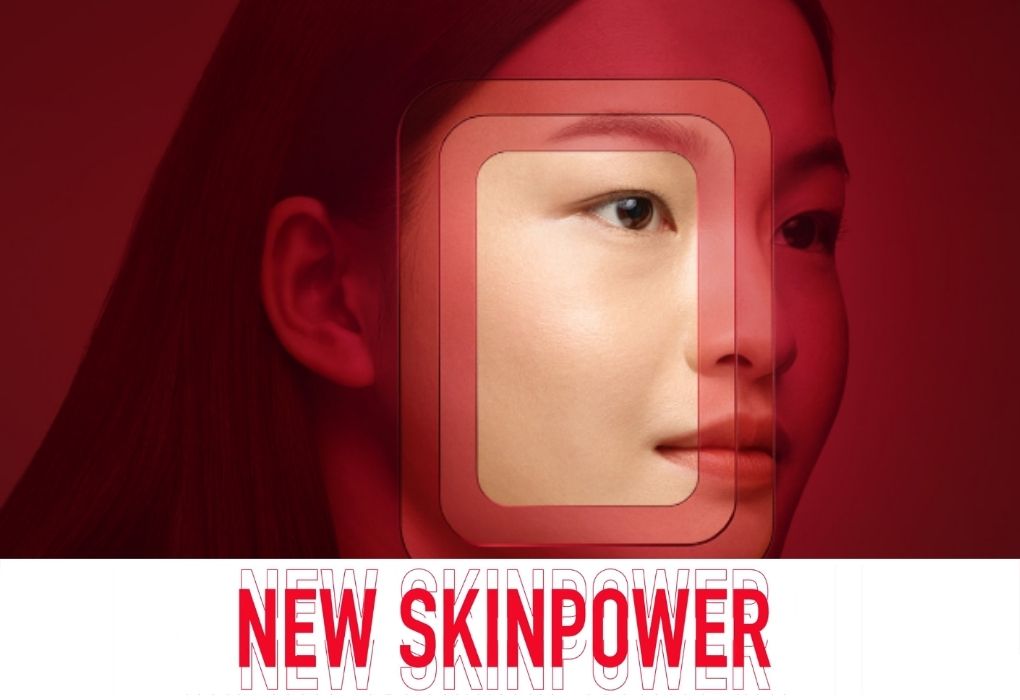Covid 19 does not arrest SKI-I’s race towards success. The well-known skincare brand of the Procter & Gamble group continues taking market share in China thanks to dynamism and foresight.
What Strategy did SK-II Chine use to grow during the pandemic
Pandemic disrupted the market but “It Can’t Rain All the Time”. During the first months of 2020, almost all companies in China (and in the whole world) suffered from the crisis. Also, SK-II’s sales slowed down. Pandemic disrupted the market. However, after the first months of the crisis, Chinese people started doing compulsive shopping again, but in the new era created by Covid 19, e-commerce and social media platforms have been taking a more important role in the life of Chinese consumers.
Read as well: The Japanese Cosmetics Segment is Growing in China
SK-II won the pandemic by investing in environmentally friendly solutions
Sandeep Seth, the chief executive officer of SK-II Global, in a recent interview stated that the Chinese interest in skincare products has grown during the year.
Health awareness and increasing concern of pollution-related problems among Chinese customers lead to higher consumption of healthcare products as well as a greater appetite for eco-friendly brands.
Thus, SK-II decided to redefine its purpose “Change Destiny”, which now is not only including People and Life, but also the Planet.
Specifically, the brand created a new package for its products, made of Bamboo, and invites all the shoppers to join “NOW”, a program that is about involving people in donating and creating something for the well-being of the Planet.
SKI-II also won the pandemic by investing in technology and e-commerce

As the world has asked all its inhabitants a new way to live their life, “each one to his own place”, Chinese addiction to the internet has grown, and the already-existing habits of doing shopping online in 2020 have reached frantic proportions.
So, Procter & Gamble built SK-II into a stronger brand. The group in fact brought new technologies into the different touchpoints, digital or not.
In the offline store, it can be possible to find the “Magic Scans”, which are intelligent contactless monitors for diagnosing the status and age of your skin, and eventually recommend products, whereas the new digital tool of the moment, live streaming, has been introduced in the company’s space on e-commerce platforms.

SK-II uses live-streaming in a very smart way: in the videos, the retailers explained how to take care of your skin while wearing a mask or staying at home, but also other kinds of offline training.
Another interesting tool that SK-II offers to its customers is “Yumi”, a sort of avatar in charge of connecting retailers and clients.
In this way the shopping online results in a more engaging tool able to create a real digital relationship between the brand and its clients.
What is the cosmetic industry like in China?
Are sales of cosmetics products growing in China?
Yes, “in October 2020, cosmetics retail sales in China amounted to around 28.15 billion yuan. This indicated approximately 20 percent increase in revenue compared to October of the previous year” (source: Statista).

China is a great market for foreign brands, here you can find some reasons:
- Chinese women spend a lot of money on cosmetics. In addition, the Chinese are becoming richer. Consequently, a Chinese woman when becomes richer certainly spends more money on beauty care.
- Do you know that Korean and Japanese buy from 15 to 21 cosmetics products for their beauty routine? China is going in the same direction. And considering how much China’s population is numerous, the potentiality of this market is incredible.

A difference you need to know about western and Chinese beauty standards
While western people prefer to buy make-up products, in China most of the market is about skincare and personal care.

In China’s cosmetic market innovation reigns
An incredible number of new products with different applications are launched every year on the market. So the Chinese are keen on innovation.
However, although it is hard to challenge to find an audience in such a competitive eco-system, there is a positive hallmark that can reassure companies interested in entering China: consumer loyalty. In fact, even if it is very hard to reach Chinese standards, when they like your product, they become loyal to it.
China: the Eldorado for international cosmetics brands
80% of the market is dominated by international brands. The remaining share is composed of Chinese cheap brands. So you cannot consider the second as competitors.
When we talk about cosmetics, Chinese women absolutely prefer to buy foreign because they don’t trust domestic brands. They look for quality products, and China does not synonym with healthy and high quality at present.
How to market a cosmetics brand in China?
The main phases a cosmetic brand should consider and analyze if wants to enter China are:
- Distribution
- Branding
- Selling
1) Cosmetic Distribution in China

This phase is featured by intermediation: agents that find distributors, distributors that look for sellers, etc.
So, it can be very difficult to have full control of such a complex ecosystem, whereas it would be less complicated to have your own store in China, but also entails that you need to invest a lot of money for opening a lot of stores.
It is assumed that the second solution takes too much time and resources, that’s the reason why brands mainly prefer to work with distributors at the beginning.
How can foreign cosmetic brands get a deal with Chinese distributors?
There are more than 10,000 distributors in China. You can find them through exhibitions, networks, prospecting them, and other ways. And you should also ask yourself “how can I convince a distributor to buy me and another brand” and then “how can I engage the distributor’s team to work better for me”?
Well, the answer is that Chinese distributors choose to work with strong brands that already have a great reputation in China since they want to sell fast without branding you. Then, in order to understand how important is your brand in China, they check your online-reputation.
What is a Chinese distributor going to check before to accept working with you?
- BAIDU is the first platform a distributor will check to understand if your brand is interesting. If they find you are visible on Baidu with Press Release, positive reviews, or there is a page dedicated to your brand on Baidu Baike (the Chinese Wikipedia), they can pass to the following step.
- RESELLERS. after Baidu, they are going to see if you have an online store on Taobao or Little Red Book, and in their opinion, it is a positive thing if your brand has an online store on them since it means you that there is already a demand for your brand.
- SOCIAL MEDIA is the third place they are going to visit. A distributor will immediately check if you have followers and a good engagement rate on Weibo, WeChat.
After this basic check, they will make an estimate and if the brand has potential they will try to do a partnership with you.
Read: Chinese Distributors don’t invest in their brands, here is how to work with them
2) Branding your cosmetics brand in China
The bigger is the market, the more you need to invest.
But if don’t have any store, you are wasting money. If you want to reach brand awareness, clients need to find you, possibly everywhere.
KOLs are the number one in brand awareness
Key Opinion Leaders (KOLs) or influencers are people who successfully promote products by making online reviews and giving advice. Chinese really trust them.
SOCIAL MEDIA: a “Must” to do Branding in China
There is an incredible number of social media in China, you need to find the right one for your brand.
Why is WEIBO one of the best tools for branding cosmetics in China?
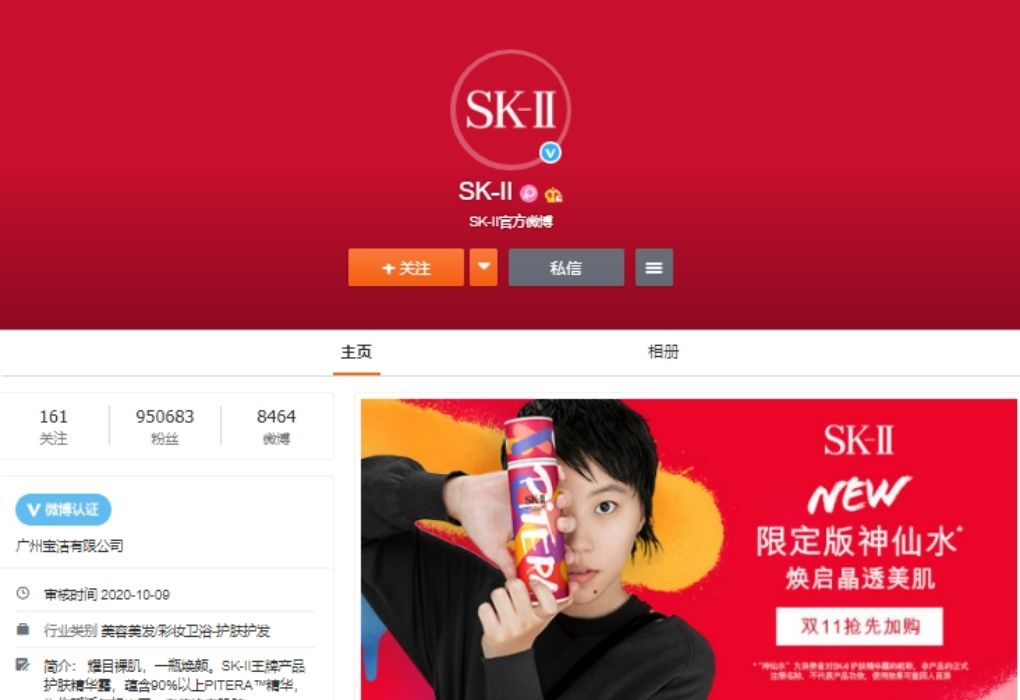
- most of KOLs are still using it:
- is an efficient tool able to reach a big audience at a lower cost (can be compared to Facebook);
- owns a good ads system;
- is a member of the Alibaba group, so if you want to sell on Taobao, Tmall, Little Red Book, you can just add the link in your post to drive traffic to your store,
- Finally, it is an open social media. Anyone can find information on Weibo without complicated procedures.
On Weibo, you can also give commercial information about your product. If you are an advertiser it’s the best place for you.
XIAOHONGSHU or Little Red Book (LRB): the Chinese “Instagram”
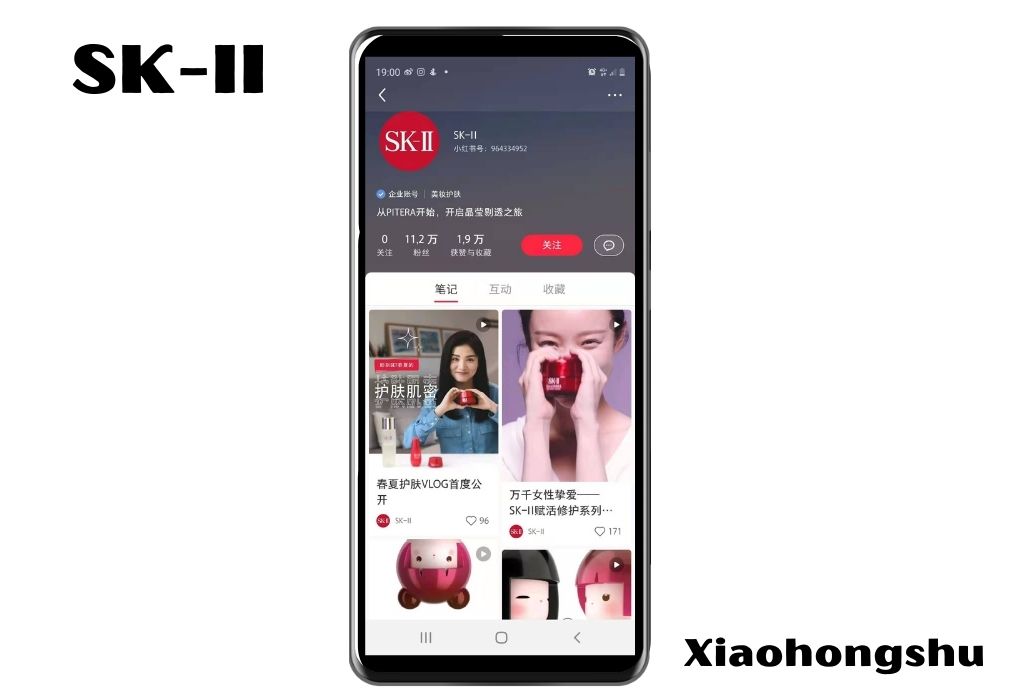
- It’s a platform based on a community.
- It’s very popular in the cosmetics sector cause 80% of LRB users are girls.
- Another useful thing about this app is that you can set up a not expensive store on it.
- It works like Instagram. it’s essential to work with KOLs on it; they talk about their life and habits, and only then about your product. This means that it is first based on community and secondly on e-commerce.
- Chinese girls look for reviews (comments or “shopping notes” about products on it.
Read also: Guide to Xiaohongshu Marketing
WECHAT: the long-term investment
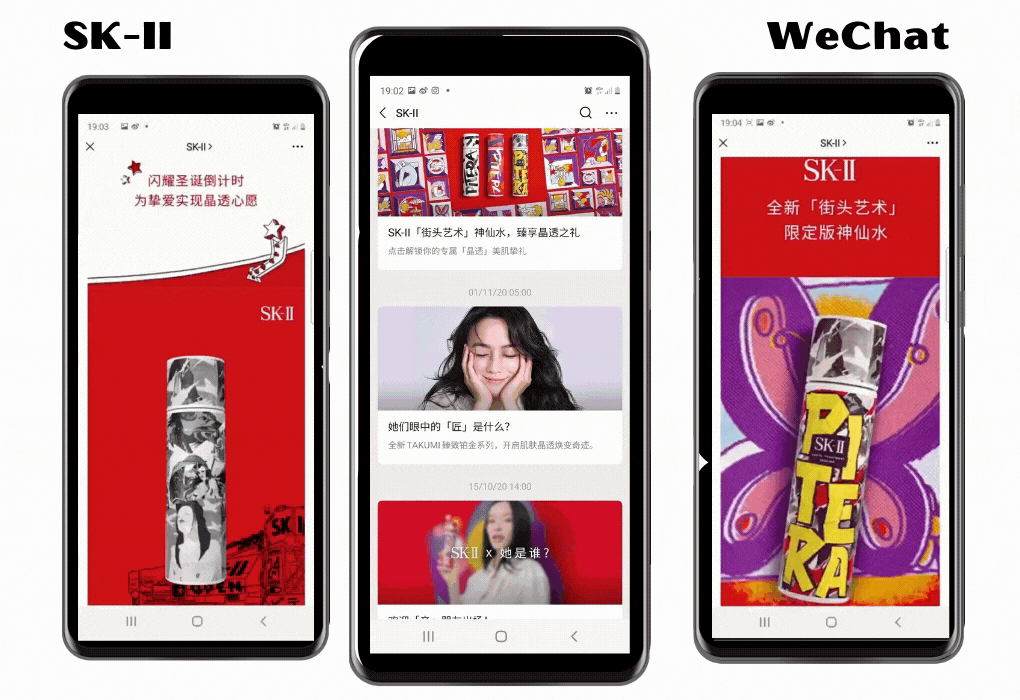
If you have a community and want to invest in a long-term strategy, it’s highly recommended to use it. It can be seen as a newsletter, used for nurturing and engaging your audience.
Read: Wechat Marketing Guide for Beauty Brands in China
You are none in China if you aren’t visible on BAIDU
BAIDU is always a place to invest. Chinese continue looking for information on it and specifically use it to find comments, reviews, articles, sources about the product/brand.
Concerning SEO, It’s not recommended to do Baidu SEO for your website, but to create content about your brand on other platforms because the Chinese customers know that a brand describes itself without criticism in its own website.
The new Chinese trend: Branding through Live streaming on TAOBAO
There are 400 million active buyers on Taobao and Chinese girls spend hours and hours on it checking products.
The trend of the moment is to do live streaming on this huge e-commerce platform, not by chance, more and more KOLs promote products on it.
3) Selling in China Best Platform
If you want to sell in China you have to consider two options:
The first one is Cross Border eCommerce and the second China e-commerce
Cross-border eCommerce: the best option for new entrants
If you don’t have a company in China, you don’t have a license to sell, you can only sell through crossborder.
So, how it works when you sell through Cross-border? Every time there is an order, you ship the product to your client, otherwise, you can have a warehouse in a Chinese free trade zone and ship your products from there.
You can find a lot of e-commerce platforms in China: Tmall Crossborder, LRB, JD Crossborder, Kaola, and not only.

All these can be divided into two main groups: the online store model, to which belong all kinds of platforms that you can freely manage. You can independently check your store, data, and logistic. Tmall Crossborder, for example, is included in this category; the second is the distributor model, e-commerce platforms that seek easy-to-sell strong brands. To this category belong Kaola or JD global. This option is less expensive but can be less interesting cause they work more like regular distributors.
China e-commerce: which platform works well if you already entered the Chinese market?
If you already have a company in China, you have a trademark, a license, and all the required documents, you can sell in China. Then, in this case, opening a store in Tmall China would be the best option.
First of all, because it is a less expensive option than Tmall global and you can also achieve a better management system than using Tmall global. And also, it is easier to sell on Tmall China because you can reach more visibility and offer fast delivery. Not by chance, Chinese consumers are used to Tmall.
However, Tmall Cross-border can be an interesting option if you want to test the market.
Guide to Exporting in China with Tmall
Why is Branding important for Tmall China?
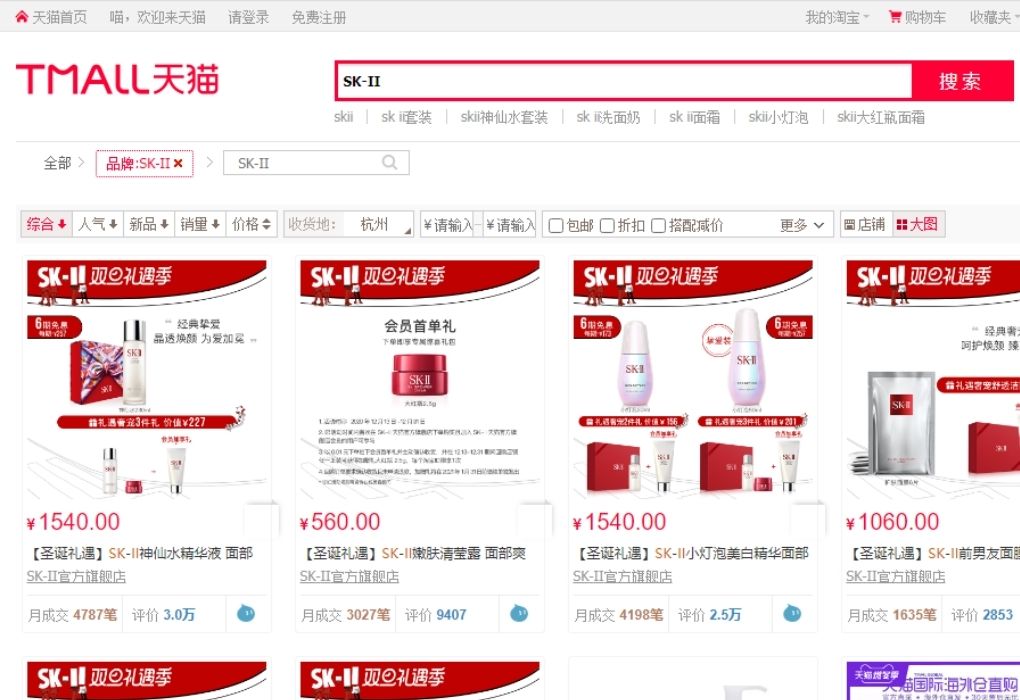
If you don’t do branding, you will never be able to sell in China.
It is necessary to increase your Conversion Rate (CR), that is the number of purchases on your store divided by the number of visitors, to sell. In fact, only when you’re CR is acceptable, you can start obtaining a good ROI.
Then, in order to gain a higher Conversion Rate, you need to invest a lot to obtain traffic acquisition. Traffic acquisition can be created by the banner, PPC, ads, and other advertising methods which are all useful to drive users into your Tmall store.
We hope this article was useful. If you have any doubts about this topic, feel free to contact us.
Want to start selling your beauty brands in China?
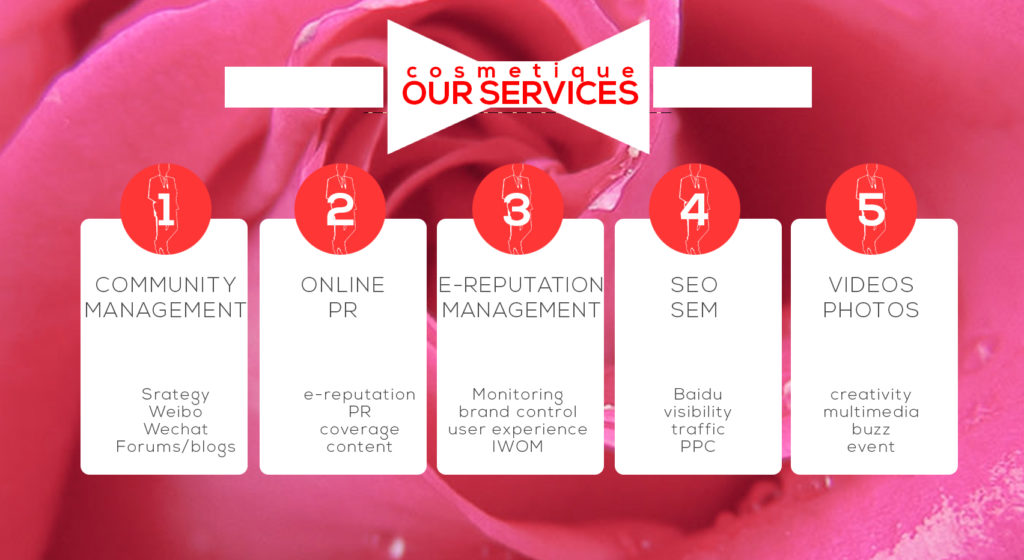
GMA is a digital agency specialized in the Chinese market. Since 2012, we have worked with more than 50 brands and created incredible strategies to reach their Chinese target. Are you curious? Give a look at our case studies.
If are interested in the Chinese skincare market, you can also read:
- https://cosmeticschinaagency.com/selling-skin-care-in-china-with-short-video-marketing-kuaishou-or-douyin/
- https://cosmeticschinaagency.com/skin-whitening-cosmetics-products-are-still-trendy-in-china/
- https://cosmeticschinaagency.com/how-can-high-end-skincare-and-beauty-brands-find-a-chinese-distributor/

